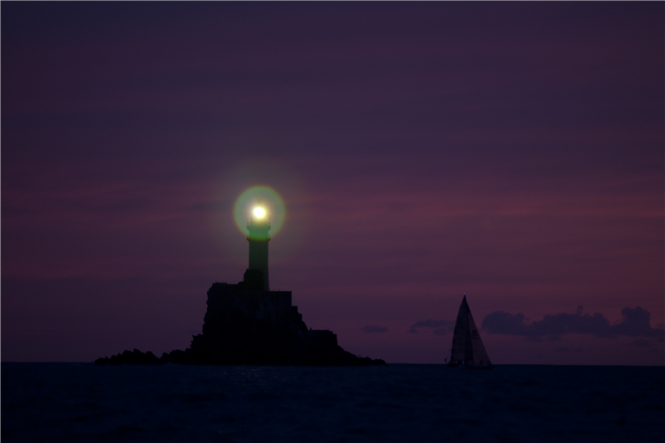This year’s 45th Rolex Fastnet Race is set to kick off in less than a month. The provisional entry list stands at 380 yachts, of which a remarkable 340 are eligible for the top prize – the Fastnet Challenge Trophy as well as Rolex Chronometer for placing first overall.

Spectacular Solent at the start of the 2011 Rolex Fastnet Race - Photo credit to Rolex/Carlo Borlenghi
This year’s race looks well set to far outstrip the previous highest entry of 315, and, in this regard alone, the 2013 Rolex Fastnet will add considerable lustre to its already polished status in sport. A glance through the entries suggests that an outstanding race is in prospect. The diverse, international fleet challenging the 608-nm course is brimming with talent throughout the size ranges.
When the biennial race organized by the Royal Ocean Racing Club (RORC) sets off from Cowes on 11 August, eyes will naturally be drawn to the expected front-runners. Spectators will be rewarded with a feast, given the mix of awe-inspiring monohull and multihull might taking part.
The largest and fastest boat on display will be the 130-foot Maxi trimaran yacht Spindrift 2, entered by Dona Bertarelli from Switzerland. In 2011, the same trimaran in different hands set a new record pace for a multihull of 1 day, 8 hours, 48 minutes (32 hrs, 48 mins). Barring mishap, Spindrift 2 should be the first boat to complete the course.
In the monohull fleet, both the 2007 and 2011 course record-holders are participating. Ian Walker, the British double Olympic silver medallist, is returning with the Volvo Open 70 Abu Dhabi, aiming to repeat his achievements of two years ago by holding off the challenge of Mike Slade’s 100-foot charter yacht ICAP Leopard, which set the previous best time in the storm-swept 2007 race. With two more Volvo 70s, including the all-female crew on SCA from Sweden, and the 100-foot superyacht Esimit Europa 2, the undisputed fastest yacht in the Mediterranean, also in the frame the contest to be the first monohull into Plymouth is an enticing prospect. The current monohull record is: 1 day, 18 hours, 39 minutes (42 hours, 39 mins).
Finishing first is not the ambition of the bulk of the fleet. The greatest, most sought-after prize is undoubtedly overall victory, awarded once the RORC’s IRC rating (handicap) system has been applied. This reward is for the yacht showing the highest level of preparation, dedication and performance, and includes a little luck with the weather.
Back-to-back race-winner sailing yacht Ran 2 has been the form boat in recent editions. An unprecedented third win in a row is a possibility if conditions favour the Mini Maxi class. Niklas Zennström’s British crew knows they will have to work hard to hold off the challenge presented by Hap Fauth’s yacht Bella Mente. This similar-sized American yacht won the Mini Maxi Rolex World Championship in 2012 and came second overall in the RORC Caribbean 600 in February.

Sailing yacht Ran 2 crossing the finish line off Plymouth to win the 2011 Rolex Fastnet Race - Photo credit to Rolex/Carlo Borlenghi
The competition will be no less fierce in the middle of the fleet. Geoff Boettcher, 2010 Rolex Sydney Hobart winner, has brought his 51-foot Secret Men’s Business 3.5 all the way from Australia to apply the lessons learnt in some 23 editions of the southern hemisphere’s toughest race to its northern counterpart. He will be up against some savvy talent. Dutchman Piet de Vroon, a Rolex Fastnet winner in 2001 and skipper of Tonnerre de Breskens, will be embarking on his 25th Rolex Fastnet.
With the bulk of competing yachts fitting in the 30- to 40-foot range, picking possible contenders from among the smallest yachts is tricky. Consistency in all aspects of performance is critical to doing well in this race; nothing should be taken for granted in the preparation for the challenge presented. Yet, the victory of 33-foot French yacht Iromiguy in 2005 proved that any yacht sailed to its full potential by a skilled and dedicated crew has a real chance in this egalitarian contest.
Rolex has sponsored the Rolex Fastnet Race since 2001, recently extending its commitment until 2021.
The race start from the Royal Yacht Squadron in Cowes is scheduled for Sunday 11 August, with the first warning signal at 10:50 BST.

























